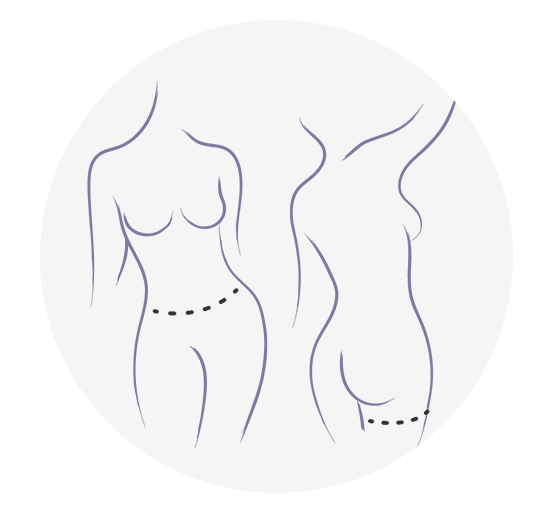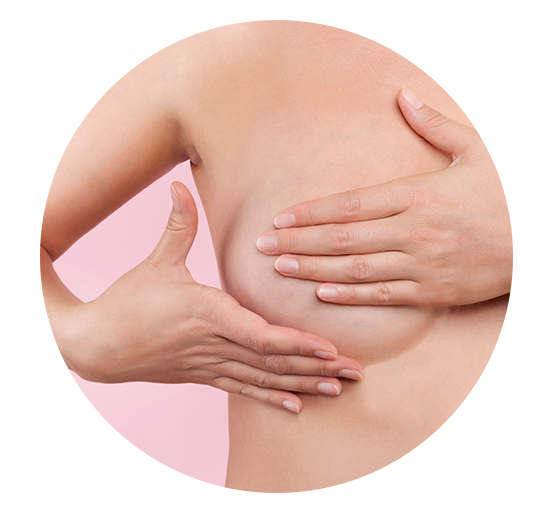This is restricted due to surgical images.
What is a Perforator Flap?
Presentation at FORCE 2018 by Dr. Joshua L. Levine
Transcription of above presentation:
What is a Perforator Flap? | Introduction
Hello, I’m Dr. Joshua Levine, speaking to you from New York City, and today I’d like to share with you some basic concepts about breast reconstruction. The title of this talk is “What is a Perforator Flap?” and I gave this talk back in 2018 in San Diego at a conference called the FORCE Conference. FORCE is an organization which is designed to assist patients who have found out that they have increased risk of developing breast or ovarian cancer because of a genetic mutation. FORCE stands for Facing Our Risk for Cancer Empowered, and every year there’s a conference in which information is disseminated about how we can optimize our situations based on our knowledge that we may be at higher risk for developing a certain type of cancer.
This talk is about the perforator flap, but before I get into what is a perforator flap I think it’s important to understand a little bit about breast reconstruction in general, so a little bit of anatomy and a little bit of history will be helpful.
Two Main Types of Breast Reconstruction
First of all, it’s important to know that there are two main types of breast reconstruction, the first being implant-based reconstruction and the second being using the patient’s own body tissue, which we call autologous breast reconstruction. A perforator flap is an autologous breast reconstruction, meaning that we’ve taken some living tissue from somewhere on the patient’s body and we’ve transplanted it to the chest to reconstruct a brand new breast.
TRAM FALP
So, how do we do that? Well, a little bit of history is important. The first and most common way of getting a large volume of living tissue from the patient’s body to the chest is called the TRAM flap. This is something that was developed many decades ago and is still used quite frequently worldwide, and it’s important to understand how a TRAM flap works so that we can get a little bit more specific in describing what a perforator flap is.
The TRAM flap takes tissue from the lower abdomen, skin and fat, and while it’s still attached to the muscle—the rectus abdominis—it is then swung up into the chest to replace the missing breast after a mastectomy. The reason that the muscle is used and remains attached to the tissue that represents the breast, namely, skin and fat, is that some major blood vessels travel within the muscle, and so by preserving the muscle as it’s attached to that skin we can transfer that tissue to the chest such that it lives in that position with the blood supply. The problem with the TRAM flap is that removing a large muscle from the abdomen is a big deal, and many patients and certainly in the gene-mutation patients, both breasts are typically removed, and taking away both muscles from the abdomen is a very big deal. So, obviously, it would be much better if the skin and fat, which is really all we need to make a breast, were removed from the lower abdomen without destroying the muscle, and the way that we do that is with a perforator flap.
Perforator Flaps
So, this picture describes what a perforator flap is. The flap refers to the skin and fat, which comes from the patient’s abdomen, and the perforator refers to the blood vessel that supplies that skin and fat. So, when we use this technique in relation to the abdomen, we call that a DIEP or a deep inferior epigastric perforator flap. That’s the name of the blood vessel that you see represented here coming through the muscle and supplying the overlying skin and fat. This is a blood vessel which perforates through the rectus abdominis muscle, can be selected, and then very delicately and gently dissected free from the surrounding muscle tissue such that the muscle is preserved, and we take only what we need to make the breast – the skin and the fat and the perforating blood vessels that supply it. These perforators are then plugged into blood vessels in the chest that are called the internal mammary blood vessels, and that’s how the tissue is transferred such that it has blood flowing in and out so that it can live in its new location.
In some thin women, taking one perforator flap from the abdomen may not be enough. The blood vessel that supplies the area of tissue that we take is limited in the amount of tissue that it can supply, and in some cases it may be advantageous to take another blood vessel, one further out towards the hip area. This allows us to take more volume of tissue as long as the tissue has its own blood supply and we can assure that once it’s transferred to the chest that it gets adequate blood flowing through it. This operation when done for two breasts is called the stacked hemiabdominal extended perforator flap or SHaEP flap, and we describe this in a series that was published in the Plastic and Reconstructive journal.
Abdominal Delay in Breast Reconstruction
But, we’ve largely replaced this operation with a newer operation called the abdominal delay. The abdominal delay allows us to incorporate the same tissue laterally that’s supplied by that secondary blood vessel but without doing the extra blood vessel and without doing the complicated extra blood vessel connections that that would require, and that’s called the surgical delay or the delayed DIEP, and there are other videos that I’ve posted on that topic that I encourage you to watch.
But, here again we share a picture of the two blood vessels supplying the one flap in order to get more tissue and more perfusion. Again, this is for patients who are very thin, may not have enough volume of tissue to harvest from the abdomen and make two breasts, and so we need to be creative in harvesting more healthy tissue that is transferrable to the chest.
PAP Flap Breast Reconstruction
Another great option in thin women who may not have enough abdominal tissue to donate is called the PAP flap. PAP stands for profunda artery perforator, and again, that’s the name of the blood vessel that supplies the tissue that we want to harvest. In this case, it’s the posterior thigh tissue, and as you can see the tissue is usually taken from just underneath the buttock crease, and it can be oriented horizontally as you see here or it can be oriented more vertically to include more posterior or medial thigh tissue. It depends on where the blood vessels are and it depends on where the extra fat is that can be donated to make about new breast, but the concept is very, very much the same: We take extra skin and fat from an area where there is extra skin and fat, and we are very careful to take it along with its key perforating blood vessel that perforates through the muscle. In this case, the muscle is called the adductor magnus. But, again, the muscle is preserved because the blood vessel is harvested very, very meticulously and very delicately such that the muscle does not have to be taken along with it, and here again we take only skin, fat and blood vessel and plug those blood vessels in in the chest to make a new breast.
BRCA Gene Mutation Breast Reconstruction #1
Here’s an example of a patient who had the BRCA or BRCA gene mutation, which meant that she was at high risk for developing breast cancer. She elected to have a bilateral prophylactic mastectomy, meaning that both of her breasts were removed surgically even though the patient did not have any cancer, and the reason for that was that this patient wanted to reduce her risk of developing cancer in the future, which was accomplished by this operation, again, called “bilateral” meaning both sides, “prophylactic” meaning we’re doing it preventively, and “mastectomy” – bilateral prophylactic mastectomy.
So, as you can see, in the picture on your left, the patient, although she has some redundant skin from having full-term pregnancies, there isn’t much fat, and taking that skin and fat alone would not have been enough. However, we were able to extend the amount of tissue that we could take by adding blood vessels—in her case, she did have the SHaEP flap—and in doing so, we were able to get enough tissue to make two beautiful breasts. You don’t even see her scar because it’s underneath the fold and she had nipple-sparing mastectomy or NSM, which means that her nipples were not removed as part of the mastectomy.
Now, again, this was a SHaEP flap—that’s for stacked hemiabdominal extended perforator flap—but today this patient would receive the same operation but simplified with a delay procedure. So, again, I encourage you to seek out my delay procedure video or delayed deep video.
BRCA Gene Mutation Breast Reconstruction #2
Here’s another BRCA gene mutation patient who also had very little abdominal tissue to harvest for breast reconstruction, but she did have adequate posterior thigh tissue, which was used. And so, here she is after her bilateral prophylactic mastectomy, which was also a nipple-sparing mastectomy, which was done through what we call an inframammary incision. You can sort of see a hint of it there near the midline on her right, which is an incision underneath the fold so that it’s very hard to see postoperatively, but this is a postoperative picture. She’s had her breasts removed, her nipples spared, and her breast tissue replaced with the PAP flaps or he profunda artery perforator flaps, and there you can see her incisions below her buttock on both sides of her legs.
Natural Tissue Breast Reconstruction for Thin Women
Now, these operations are for thin women who don’t have enough abdominal tissue to donate. Some women have very, very little tissue, and this is such a case. This patient ended up having both abdominal flaps and PAP flaps (profunda artery perforator flaps). So, she had DIEP flaps and PAP flaps, and in a patient like this who’s very, very thin and we have a large volume requirement, we can take one-half of the abdomen to make the upper part of each breast, and then one flap from each posterior thigh to make the lower part of the breast, and in these cases we can really get an outstanding result in even very, very thin patients.
So, that concludes my talk on the basics of perforator flaps and perforator flap anatomy. I hope this has been helpful to you, and I encourage you to continue to do your research because the more that you know, the better decision that you will be able to make. Thank you.





